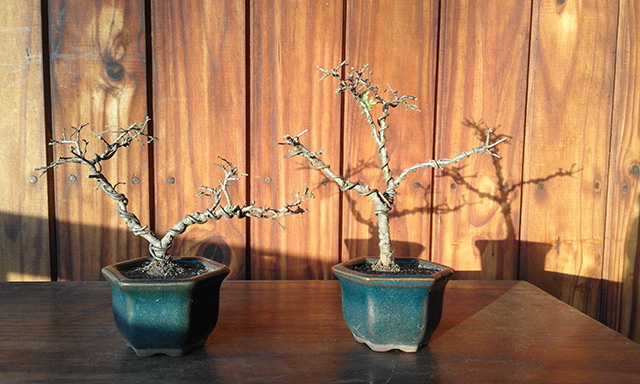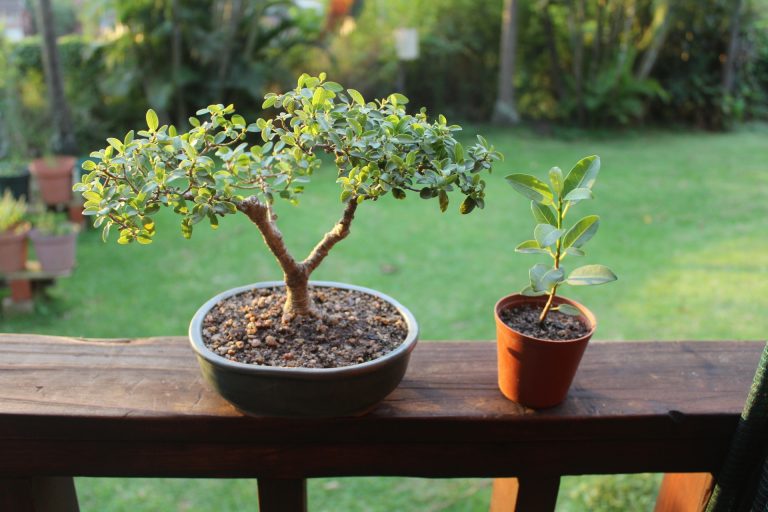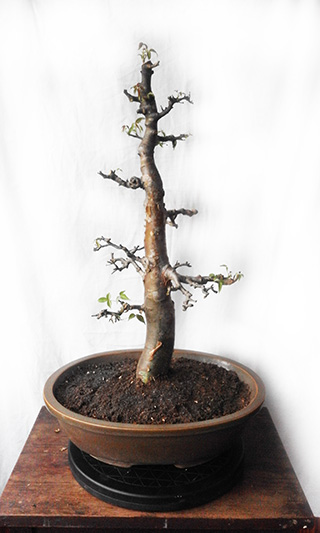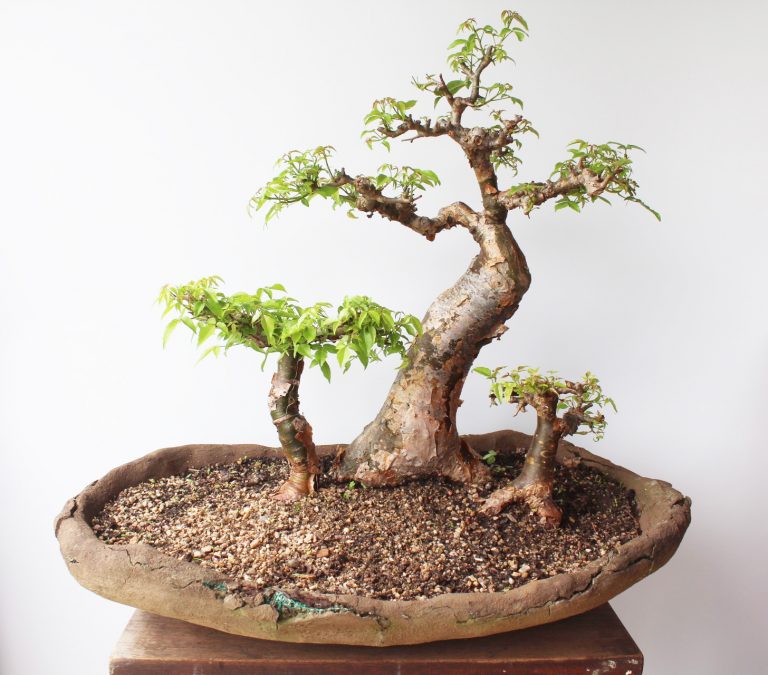Bonsai Cuttings are easy to create

Also known as cloning, the taking of cuttings is a practice that most bonsai growers partake in. In its simplest form, taking a cutting from a plant is as simple as taking a small branch that one has cut from a bonsai tree and planting it in soil. In time, and if treated kindly, the newly planted branch will develop its own roots and become a small tree. Granted, one is unlikely to grow a spectacular bonsai that one may see in coffee-table books, but, the small trees one develops from cuttings often make wonderful, small bonsai, and in bonsai, bigger is not always better. We are talking about miniature trees after all, so in my mind, creating smaller trees is the whole point.
Be selective
The reason why we can develop nice trees quite quickly by planting cuttings is because one can, and should, be selective about the cuttings one plants. Just like everything in bonsai it takes time and practise, but one quickly learns to select little branches that have the potential to become trees with style. The style is often already there. I have a number of small potensai, which are trees with the potential to become bonsai, growing that I knew from the moment I put them in the soil what style and shape they would have eventually. Also, I have some ideas in my head of creations that I would like to make in the future, and by planting cuttings that have the correct basic shape I can slowly build up a store of material that I can one day use for these artworks.
Tips to improve your success rate with cuttings
Cuttings must have a healthy terminal bud. If the cutting has had its tip cut off then it will not grow.
Remove almost all of the leaves from the cutting, leaving just one or two small new leaves. Too many leaves on the cutting will rob the little cutting of its very limited supply of stored nutrients.
Remove the cutting as closely as possible to where it joins the larger branch. The base of the cutting should flare out slightly where it joins the larger branch. Try and cut it so that the cutting has just a little bit of the flare. The little flared bit at the base seems to grow roots more readily than a piece cut from the middle of a branch. This flare is called a heal.
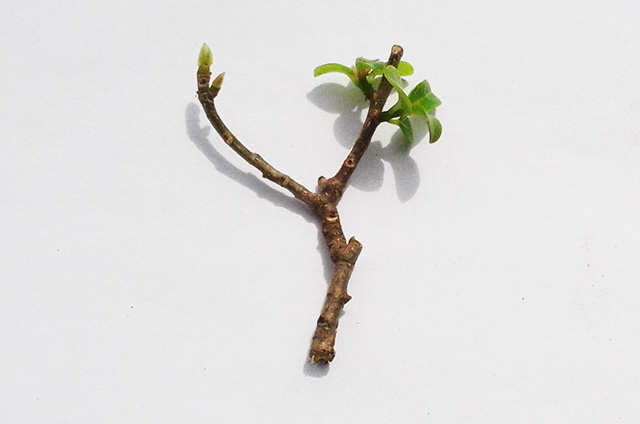
Dip the stem in hormone powder
Although the basic principle of taking cuttings is fairly simple there are some “best practises” that can be employed to get better results. Simply putting the base of a cutting into soil is not a guarantee that it will develop roots. To encourage roots to develop one can dip the end of the cutting into rooting hormone before planting. Rooting hormone is normally in a white powder form, and should be available at most garden nurseries. Normally after planting the cuttings, they are given a very watering with a spray or mister. I feel this just washes the hormone powder off. I am trying a new method by watering the soil before planting the cuttings. I see no reason why it wont work just as well, and less chance of disturbing the newly planted cutting.
Bonsai cuttings like company
Cuttings like company. Research has shown that cuttings planted in small groups tend to grow better than cuttings planted in isolation. So, depending on the size and shape of your container, plant four or five or more, quite close together. After a year or two one can separate them and plant them into deeper containers. They will stay in deep containers for quite a few years to enable them to grow larger more quickly. Transplant them into training pots only once they have reached a significant size.
Place the newly planted cuttings in a shady place out of direct sunlight and in about two weeks one should see new shoots emerging everywhere. If you want to know why two weeks is a magic number in the garden then have a look at my article on the phases of the moon.
The parent tree
Very often a grower will identify one specific tree as a parent tree from which they will take most of their cuttings. This specific tree will have displayed a specific tendency that the grower would like to reproduce in other trees. Perhaps the ability to reduce its leaves more than others of the same species, or perhaps a low or recumbent growth pattern. These tendencies can be carried from parent to child. The grower will grow this tree specifically to harvest cuttings from, so he or she will allow the branches of this tree to grow longer than normal, and to grow in places where normally we would not allow branches to develop. This parent tree will not necessarily be styled as a bonsai itself, but, after many years of providing cuttings it may very well become a spectacular bonsai in its own right simply because it will have developed a substantial trunk.
Propagating Bonsai – Conclusion
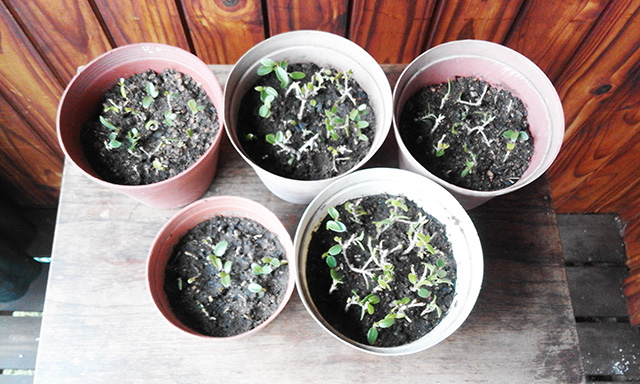
The little cuttings I am planting in this tutorial may only begin to look like bonsai in five years time, but I know that I am going to still be doing bonsai in five years. In ten years I will have a whole bunch of really beautiful little fig bonsai, all at the cost of just a little bit of effort.
1 month later . . . .
Well, I don’t intentionally set my self up for disaster, but this one I have to share. The little cuttings in the images above were planted in my normal bonsai soil because I did not have clean river sand at the time. The success rate was not good. Two or three cuttings per pot took. The rest died. Far from being discouraged, I am thrilled. These tiny little cuttings are actually quite difficult to get to shoot. I think it is because they are so small that they have a very limited amount of stored energy, and they simply run out of food before their new roots can form. I might have planted sixty or seventy little cuttings, and from that I have perhaps fifteen new trees, which is not bad for an afternoon’s effort.
My success rate would have been significantly better had I planted my cuttings in plain coarse river sand. The river sand drains far quicker than bonsai soil that has compost added. This means that there is a regular and quite rapid cycle from wet to almost dry. The almost dry bit is very important. As the water drains new air is sucked into the sand. The newly emerging roots require the new air in the sand to help them grow, and they are encouraged to begin spreading to look for more moisture. As their tips but up against the coarse stones their forward movement is inhibited, so they branch. This is the root’s version of pruning. As the roots branch they cause new roots to shoot from the sides, creating a healthy network of fine roots.
The image below shows the difference in planting cuttings in soil, on the left, and in plain river sand on the right, which I planted just a couple of days after the pot on the left. The cuttings in river sand have taken much more easily. Only once they have taken, can plant food be added to their water. It is pointless to give them plant food until they have grow some small roots. Without roots the can not use the plant food, and the plant food may burn the existing leaves.


